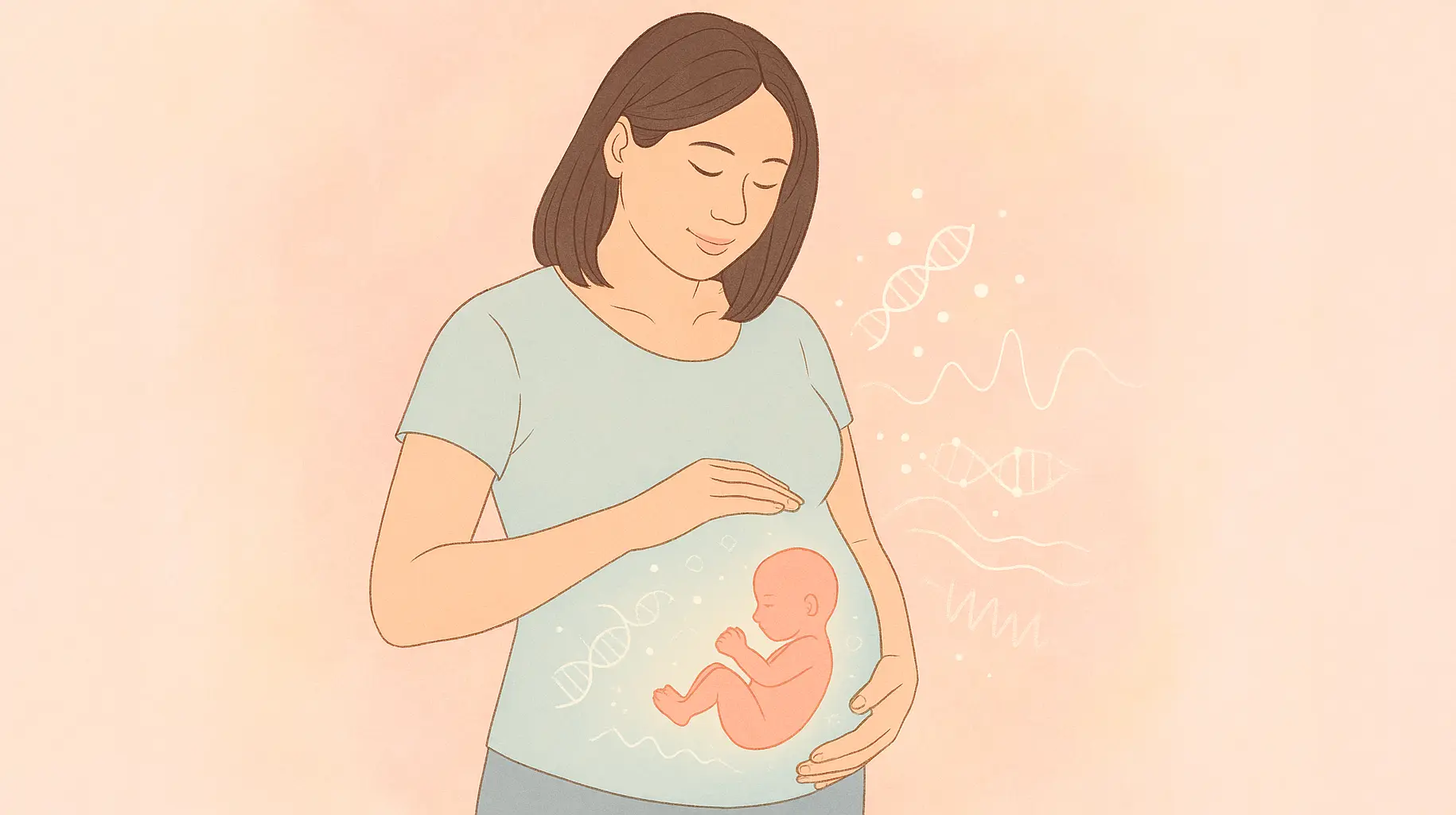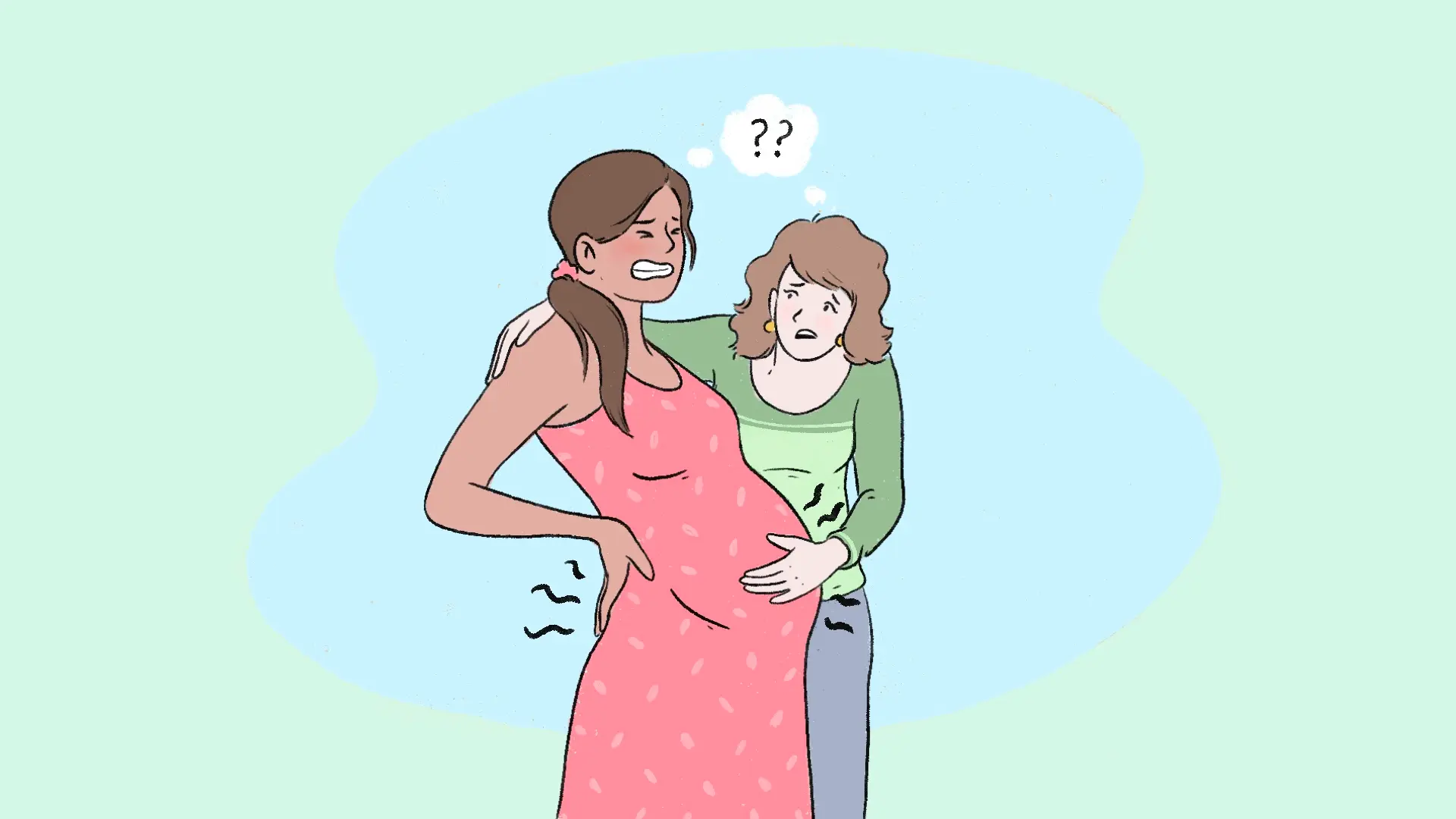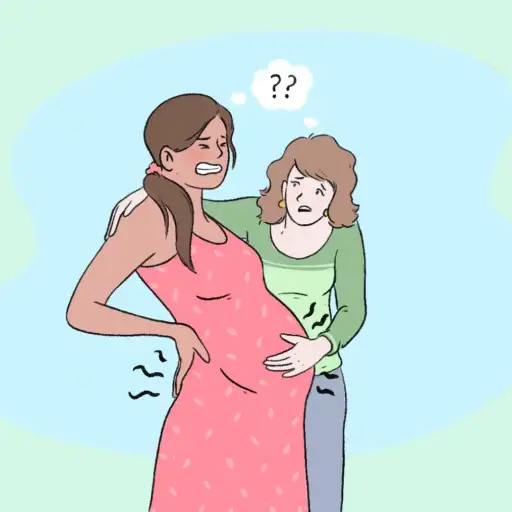Labor signs can be quite different from what most expectant mothers might expect. Movies often show dramatic scenes of water breaking, but this happens to only 15% of women before active labor begins. The United States welcomes almost 3.8 million babies annually, which means an equal number of women experience this life-changing journey.
Regular contractions serve as a common labor indicator that most pregnant women recognize. However, their bodies might send unusual signals during weeks 37, 38, or 39. These signals range from digestive changes to sudden bursts of energy. The body often gives subtle hints through loose stools or diarrhea as labor approaches. Braxton Hicks, also known as “practice contractions,” typically begin after 16 weeks and help strengthen the uterus for birth. The cervix must reach 10 cm dilation before the mother can start pushing during labor’s final stage. Expectant mothers who understand these quiet labor signs can better recognize their body’s preparation for delivery, even when the signs seem unusual.

Table of Contents
- 1 1. Baby Drops: The First Physical Shift
- 2 2. Diarrhea and Digestive Changes
- 3 3. Nesting Instinct and Sudden Energy
- 4 4. Back Pain, Hip Aches, and Lightning Crotch
- 5 5. Mucus Plug and Bloody Show
- 6 6. Emotional and Intuitive Signs
- 7 7. Water Breaking: Not Always a Gush
- 8 Summing all up
- 9 Here are some FAQs about weird signs labor is near:
1. Baby Drops: The First Physical Shift
Your baby settling deeper into your pelvis is one of the first physical signs that your body gets ready for childbirth. Medical experts call this “lightening” or “baby dropping” – a milestone that brings you closer to meeting your little one.
What is lightening and when it happens
Lightening happens when your baby’s head moves down into your pelvis to prepare for birth. This creates extra space in your upper abdomen as your baby gets into position for delivery. The name “lightening” matches what many women feel – less pressure up high in their belly.
Most first-time moms experience this change 2 to 4 weeks before delivery. Women who have given birth before might not notice their baby drop until labor starts. Medical experts say the timing varies – your baby could drop weeks or just hours before labor begins.
A quick look in the mirror often reveals when your baby has dropped. Your belly shape changes and sits lower than before. This usually happens between weeks 36-38, though each woman’s experience is different.
How it affects breathing and bladder pressure
Physical changes become noticeable after your baby drops. Breathing gets easier because there’s less pressure on your diaphragm and lungs.
The downside? Your bladder feels more pressure. You’ll need to visit the bathroom more often. You might also feel stronger pelvic pressure or sharp sensations – some moms call them “zings” – in the pelvic area.
Other physical effects include:
- Better digestion and less heartburn because your stomach has more room
- A noticeable “pregnancy waddle” from the new weight distribution
- More Braxton Hicks contractions might occur
Why it’s a sign labor is near
Your baby’s drop doesn’t tell exactly when labor will start, but it shows your body is getting ready for delivery. This descent means your baby is moving into birth position.
This repositioning marks an important pre-labor milestone, especially for first-time moms. Your pelvic muscles change to make room for the birth. Yet patience helps – even after your baby drops, labor could still be days or weeks away.
Your healthcare provider can confirm the drop by measuring your fundal height – the distance from your pubic bone to the top of your uterus. They also check your baby’s head position relative to your pelvis. These measurements help track your progress toward labor.

2. Diarrhea and Digestive Changes
Many expectant mothers feel surprised when they find that digestive issues, especially diarrhea, might signal their baby’s arrival. Loose bowel movements usually appear 24–48 hours before labor starts.
Why your bowels get looser before labor
Your body goes through major hormonal changes to prepare for childbirth as your due date gets closer. These changes affect your entire digestive system, not just your uterus. Diarrhea becomes more common during the third trimester and could mean labor is approaching.
This digestive change is your body’s natural way to prepare, and most women shouldn’t worry about it. The hormones that ready your uterus for contractions also affect your intestines. Many experts believe your body empties the bowels to make room for the baby’s journey through the birth canal.
The role of prostaglandins
Prostaglandins play the most important part in this pre-labor symptom. Your body makes these hormone-like lipids at sites of tissue damage or infection, and they serve vital functions during childbirth.
We noticed prostaglandins help soften and dilate the cervix while triggering uterine contractions. Your body makes more prostaglandins in the final days before delivery. These compounds make the smooth muscles in your intestines more active, which leads to looser and more frequent stools.
The surge of prostaglandins creates what researchers call a “perfect hormonal storm.” They prepare your cervix to dilate and increase your intestinal activity at the same time. The same process that helps your body get ready for birth causes changes in your digestion.
How to stay hydrated and comfortable
The biggest problem with pre-labor diarrhea involves preventing dehydration. Here are some helpful strategies:
- Drink plenty of fluids – water works best, along with clear broths and diluted fruit juices
- Choose gentle, binding foods like white rice, toast, applesauce, and ripe bananas (the classic BRAT diet)
- Avoid spicy foods, dairy, caffeine, and very sweet beverages
- Eat small, frequent meals instead of large portions
You can lie on your left side to ease abdominal pressure and use a warm compress if you have cramps. This uncomfortable symptom often means you’ll meet your baby soon.
3. Nesting Instinct and Sudden Energy
The urge to clean, organize, and prepare your home might signal one of the most peculiar signs that labor may be approaching. Your nesting instinct grows stronger as your due date approaches. This primal response shows your body getting ready for childbirth.
What nesting looks like
Nesting shows up as an overwhelming desire to get your home ready for your baby’s arrival. Many women experience this fundamental change in behavior that includes:
- Deep cleaning of often-ignored spots
- Getting closets, drawers, and baby items in order
- Removing extra clutter
- Multiple rounds of washing and folding baby clothes
- Making and freezing meals for postpartum days
- Frequent checking of hospital bags
Regular pregnancy preparation differs from nesting behaviors near the end. A mom-to-be might feel an urgent need to clean bathroom surfaces, sanitize baby items, or move nursery furniture around. These activities may seem random at first glance. Nature designed them to create a clean, safe space for a newborn who has a developing immune system.
Burst of energy before labor: myth or real?
Science confirms the pre-labor energy surge is real. Research shows nesting behaviors reach their peak during the third trimester. A sudden burst of panic-like energy hits many women 24 to 48 hours before labor starts. This final rush of activity likely comes from increased adrenaline in your system.
This energy boost often appears right before labor begins. It stands out as one of those unusual signs that labor approaches at 38 or 39 weeks. Birth attendants and midwives throughout history have seen this pattern as a reliable sign that labor will start soon.
Balancing rest with preparation
Nesting brings psychological benefits, but setting boundaries is vital. Safety comes first – avoid climbing ladders, heavy lifting, or pushing yourself too hard so close to delivery. These balanced approaches can help:
- Use timers to take regular breaks
- Let partners or family members help
- Focus on important tasks instead of everything
- Switch between activity and rest periods
Early labor makes up about three-quarters of your total labor experience. Saving energy during pre-labor nesting helps prepare for the work ahead. Active labor will give clear signals when it’s time to move from preparation to delivery.
4. Back Pain, Hip Aches, and Lightning Crotch
Many expectant mothers experience three distinct discomforts that signal birth is approaching. These sensations include intense back pain, aching hips, and the aptly named “lightning crotch.” Medical providers might not fully explain these weird signs labor is near.
Why back and hip pain intensify
Research shows that 1 in 4 women experience severe low back pain during labor. The baby’s position within the pelvis causes this discomfort. The pain becomes more intense when the baby’s head presses against the mother’s lower spine and tailbone.
Several factors make back and hip pain worse as labor approaches:
- The hormone Relaxin loosens ligaments and muscles throughout your pelvis
- Your baby’s growing weight puts pressure on your spine and pelvic joints
- Your pelvic shape variations can make discomfort worse
- Pre-existing spinal conditions like scoliosis may increase pain
The hip pain often spreads down the legs. It feels like dull aches that come and go—a clear sign that your body prepares for labor.
What is lightning crotch?
The term “lightning crotch” describes the sensation perfectly. This sharp, sudden, shooting pain strikes the vaginal or pelvic area with lightning-like speed. Most women feel this jarring sensation during their third trimester (weeks 28-40). The pain feels like an electric jolt or stabbing sensation that lasts just seconds.
The baby’s pressure against your cervix or surrounding nerves causes these sensations, unlike menstrual cramps or contractions. These intense jolts vanish as quickly as they appear.
You need to watch several key patterns to distinguish between normal pregnancy discomfort and labor-signaling pain. Labor-related back pain usually:
- Gets more intense with each contraction
- Continues between contractions
- Stays constant rather than coming and going
- Creates painful muscle spasms that spread to the hips
Lightning crotch alone doesn’t reliably indicate labor—you might experience it for weeks before delivery. Look for pain that follows regular patterns, gradually becomes stronger, or appears with other labor signs like mucus discharge or regular contractions.
5. Mucus Plug and Bloody Show
Your developing baby stays protected from infections by a special barrier throughout pregnancy. This barrier is the mucus plug, which might come out as labor gets closer. Many women notice it appears with or after bloody show. These are among other weird signs labor is near that women typically experience just before delivery.
What the mucus plug looks like
The mucus plug starts forming early in pregnancy (around week 7) as protective mucus that collects in the cervical canal. This sticky barrier keeps bacteria from getting into your uterus. Here’s what you can expect to see:
- Clear, off-white, or slightly blood-tinged (red, brown, or pink) in color
- Sticky, stringy, and jelly-like in texture
- About 1-2 inches long
- Around 1-2 tablespoons in volume
- No noticeable smell
The mucus plug can come out all at once as a gelatinous glob. Some women might notice it gradually coming out over days or weeks, mixed with normal pregnancy discharge. Others might not even notice when it passes.
Difference between mucus plug and bloody show
These two signs are connected but different in what they are and when they happen. The mucus plug is built up cervical mucus that has kept your cervix sealed during pregnancy. Bloody show happens when tiny blood vessels break in your cervix as it starts to soften and open up.
Bloody show looks like mucus with blood in it, ranging from pink to brown to bright red. The mucus plug might come out weeks before delivery, but bloody show usually means labor is close—often within 24-48 hours. Every pregnancy is unique though. Some women go into labor within hours of seeing bloody show, while others might wait several days.
When to call your provider
The mucus plug passing or bloody show usually doesn’t mean you need immediate medical care. You should call your healthcare provider right away if you see:
- Mucus plug loss before 37 weeks of pregnancy
- Bright red bleeding that needs a pad (more than two tablespoons)
- Heavy bleeding with pain or contractions
- Sudden fluid gush (your water might have broken)
- Any big changes in vaginal discharge
Note that these signs often mean labor is approaching, but you don’t always need to rush to the hospital.
6. Emotional and Intuitive Signs
Physical changes aren’t the only signs – hormonal surges before childbirth trigger deep emotional changes. These changes reflect the mind-body connection as it prepares for the intense experience ahead. They act as quiet signals that labor is approaching.
Feeling off or overly emotional
Your hormones go into overdrive as labor approaches, which creates emotional waves throughout your system. Women often feel unusually irritable or tearful, with sudden mood swings in the final days before labor starts. These emotional changes happen because rising levels of estrogen, oxytocin, and prostaglandin prepare your body for delivery.
A Mumsnet user felt “really irritable and strange” with “period-like pains” just hours before her labor started. Someone else became “teary-eyed” during her midwife appointment the same day her labor began. These emotional signals aren’t just random – they’re driven by biology.
Women might feel restless and anxious, with disrupted sleep patterns in the days before labor. The same hormonal mix that causes physical changes typically leads to these reactions.
Gut instinct that labor is near
A mother’s intuition remains one of the most interesting yet scientifically mysterious pre-labor indicators. Birth stories often tell of women who just “knew” labor was coming, sometimes days in advance. This sixth sense goes beyond any logical explanation.
“I just felt it was time,” said one mother who predicted her quick labor after weeks of slow progress. Another mom experienced “a warm fuzzy feeling” and felt content during an evening walk with her husband—her labor started that night.
This awareness often appears as an unusual calmness in the midst of typical pregnancy worries. Many women say a peaceful certainty replaces their previous concerns, which signals they’re ready for birth.
Weird signs labor is near mumsnet and forum stories
Online communities share fascinating stories about unusual emotional labor signals. One mother had “really weird surreal feelings” the day before delivery—her senses became heightened and “colors, smells were so vivid and raw.”
Some women get strange urges. One mom had a “bizarre urge to paint my toenails” at 11 PM—contractions woke her at 7 AM and her baby arrived by noon. Pets sometimes act differently too—they become super attentive or unusually distant as labor approaches.
Your body sends messages through multiple channels. Emotional changes might be the first hint that labor is coming, especially when combined with physical symptoms.
7. Water Breaking: Not Always a Gush
Hollywood movies show water breaking as a dramatic flood in restaurants. Reality looks quite different. This milestone happens when your amniotic sac ruptures and ranks among the most misunderstood weird signs labor is near that moms-to-be experience.
Trickle vs gush: what to expect
Your water breaking usually comes as a gentle trickle or modest gush of fluid. The experience feels more like a slow leak than the dramatic deluge shown in movies. The actual amount varies based on several factors:
- Your amniotic fluid volume
- The rupture location in the amniotic sac
- Your baby’s head position and its ability to block fluid
Some women feel a subtle “pop” with warmth trickling down their legs. Others notice a more significant release that soaks through their clothes.
How to tell if it’s amniotic fluid
The final weeks at 37, 38, or 39 weeks make it tough to tell amniotic fluid from urine or increased vaginal discharge. Amniotic fluid has these characteristics:
- Clear or pale yellow color
- No odor (unlike urine’s distinct smell)
- Thin, watery consistency
- Can’t be controlled or “held in”
- Leaks continuously (often with contractions)
Here’s a simple test: empty your bladder, put on a clean pad, and lie down for 30 minutes. The fluid will pool and release when you stand up if it’s amniotic fluid.
What to do next
Take these steps if you think your water broke:
- Track the time, color, and fluid amount
- Call your healthcare provider
- Stay away from baths, tampons, and sex to prevent infection
- Get ready to go to your birthing location if recommended
Your healthcare team will likely suggest delivery within 48 hours after your water breaks to minimize infection risks. Your baby stays protected during this time because about one-third of amniotic fluid regenerates every hour.
Summing all up
A symphony of signals marks the end of pregnancy. These signals might seem strange but they prepare both mother and baby for the incredible trip ahead. The body works through hormonal, physical, and emotional mechanisms to ready itself for childbirth in the final weeks.
Every woman’s labor experience is different. The baby might drop weeks before delivery for some mothers, while others notice this change just hours before contractions start. Digestive changes can affect women in various ways – some experience dramatic effects, others barely notice them. Other signs like the nesting instinct, back pain, mucus plug release, emotional changes, and water breaking follow their own unique patterns.
Understanding these seven strange labor signs enables expectant mothers to recognize their body’s preparation process. Mothers should look beyond just timing contractions five minutes apart. These subtle signals paint a complete picture of approaching labor.
The body shows remarkable wisdom through these signs, even when they feel uncomfortable or inconvenient. Each sign serves a purpose – from the digestive system clearing itself to hormones triggering nesting behaviors and the cervix preparing for dilation.
Labor sends quiet messages before it announces itself loudly. Physical discomfort and intuitive awareness help bridge pregnancy and parenthood. Your instincts deserve trust when something feels different, especially after 37 weeks.
The transformation from pregnancy to motherhood brings many surprises. These weird signs, despite their strangeness, confirm your body’s natural wisdom as you approach the finish line. Soon you’ll hold your newborn, and these signals will become memories.
Here are some FAQs about weird signs labor is near:
What are unusual symptoms before labour?
Some weird signs labor is near include sudden bursts of energy (nesting instinct), diarrhea, or even a runny nose due to hormonal shifts. Other unexpected symptoms like increased clumsiness, vivid dreams, or a metallic taste in your mouth can also signal that labor is approaching, especially when noticing weird signs labor is near 37 weeks or later. If you experience these alongside contractions, it may be time to prepare for delivery.
Do you get a weird feeling before you go into labor?
Yes, many women report weird signs that labor is near, such as an unsettling gut feeling, extreme restlessness, or an odd sense of detachment. Some describe a sudden drop in baby movements or an unusual pressure in their pelvis, particularly when observing weird signs labor is near 38 weeks. Trusting your instincts is important, as your body often gives subtle hints before active labor begins.
What is the 3 2 1 rule for labour?
The 3-2-1 rule helps determine if it’s true labor: contractions should be 3 minutes apart, lasting 2 minutes each, for at least 1 hour. Unlike weird signs labor is near 39 weeks, which may include unusual symptoms, this rule focuses on contraction patterns. If your contractions fit this description, it’s likely time to head to the hospital, as active labor is progressing.
Are there any signs you’re about to go into labor?
Yes, common (and some weird signs labor is near) include the mucus plug releasing, water breaking, or consistent contractions. However, less obvious signals like sudden back pain, leg cramps, or a change in baby’s position can also indicate labor is imminent, especially when tracking weird signs labor is near 37 weeks or beyond. Always consult your doctor if you’re unsure whether labor has started.
What are two false labor signs?
Two common false labor signs are Braxton Hicks contractions (irregular and painless tightening) and contractions that stop when you change positions. Unlike weird signs that labor is near, false labor doesn’t follow a consistent pattern or intensify over time. If you’re unsure, especially around weird signs labor is near 38 weeks, timing contractions can help distinguish real labor from practice contractions.
Do hormones go crazy right before labor?
Absolutely—hormonal surges, especially oxytocin and prostaglandins, increase dramatically, which can cause weird signs labor is near 39 weeks, like mood swings, hot flashes, or sudden nausea. These hormonal shifts help soften the cervix and trigger contractions, so emotional and physical changes are common. If you feel unusually irritable or weepy, it could be a sign labor is approaching.

